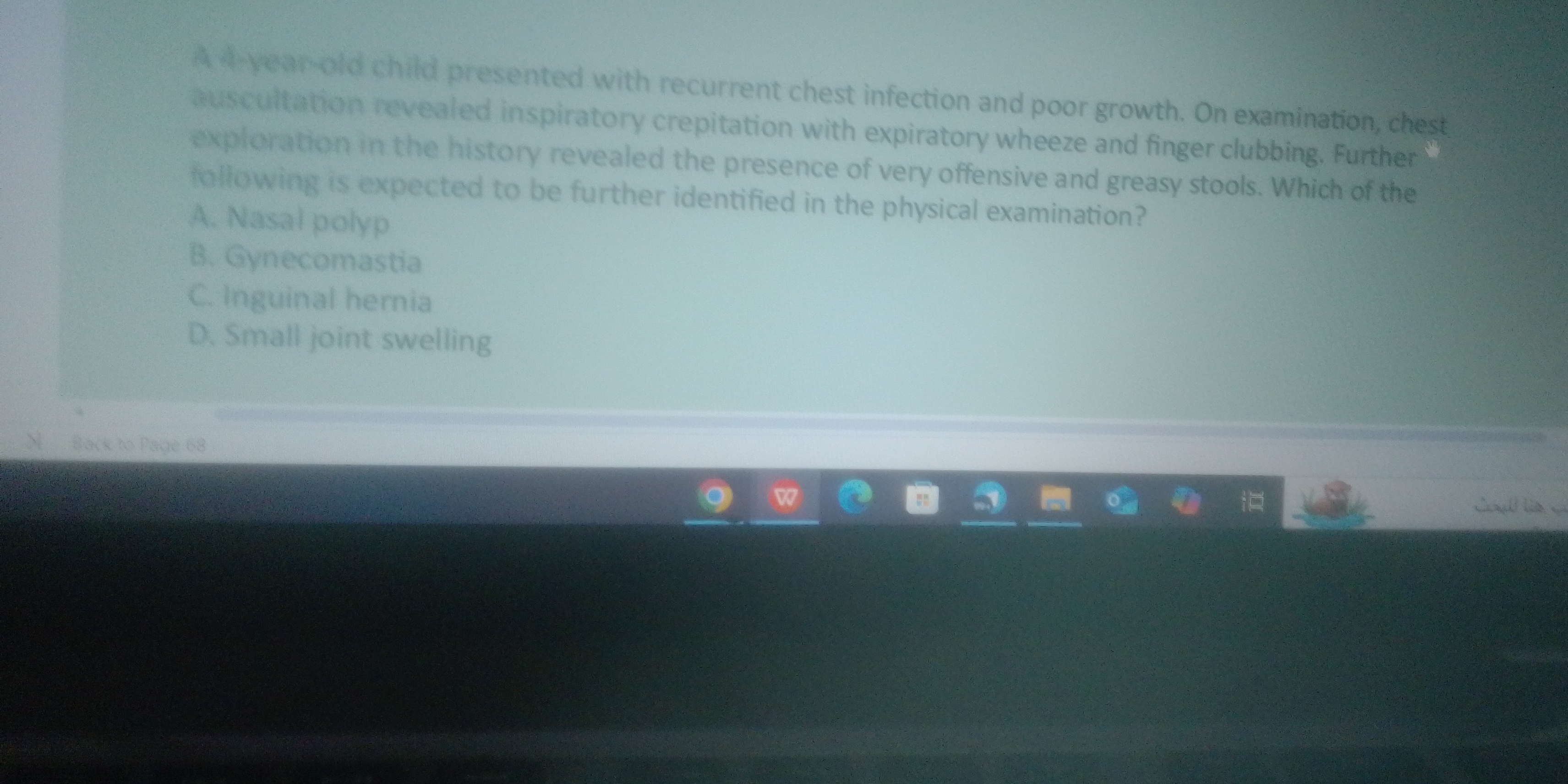A 4-year-old child presented with recurrent chest infection and poor growth. On examination, chest auscultation revealed inspiratory crepitation with expiratory wheeze and finger c... A 4-year-old child presented with recurrent chest infection and poor growth. On examination, chest auscultation revealed inspiratory crepitation with expiratory wheeze and finger clubbing. Further exploration in the history revealed the presence of very offensive and greasy stools. Which of the following is expected to be further identified in the physical examination? A. Nasal polyp B. Gynecomastia C. Inguinal hernia D. Small joint swelling

Understand the Problem
The question describes a 4-year-old child presenting with symptoms indicative of possible underlying medical issues. The symptoms include recurrent chest infections, poor growth, inspiratory crepitation with expiratory wheeze, finger clubbing, and offensive greasy stools. The question asks what additional finding is expected in the physical examination, given the presented information. This question is most likely related to a pediatric case study and requires medical knowledge to answer correctly.
Answer
The answer is A. Nasal polyp.
The correct answer is A. Nasal polyp. The child's symptoms indicate cystic fibrosis, which is commonly associated with nasal polyps.
Answer for screen readers
The correct answer is A. Nasal polyp. The child's symptoms indicate cystic fibrosis, which is commonly associated with nasal polyps.
More Information
The combination of recurrent chest infections, poor growth, inspiratory crepitation, expiratory wheeze, finger clubbing, and offensive greasy stools strongly suggests cystic fibrosis (CF). Nasal polyps are a common finding in patients with CF.
Tips
Consider the most likely underlying condition based on the constellation of symptoms (recurrent chest infections, poor growth, greasy stools, finger clubbing). Then, think about the common associated findings with that condition.
AI-generated content may contain errors. Please verify critical information